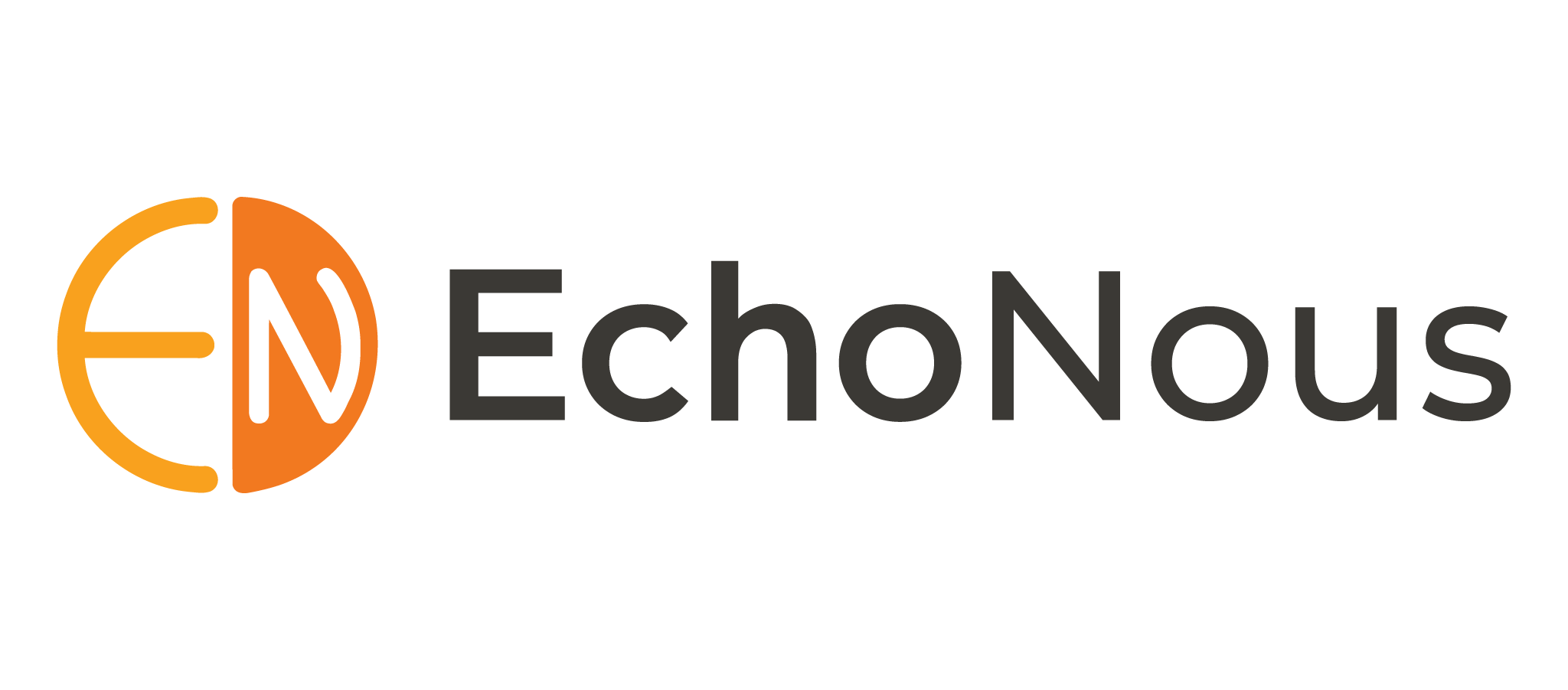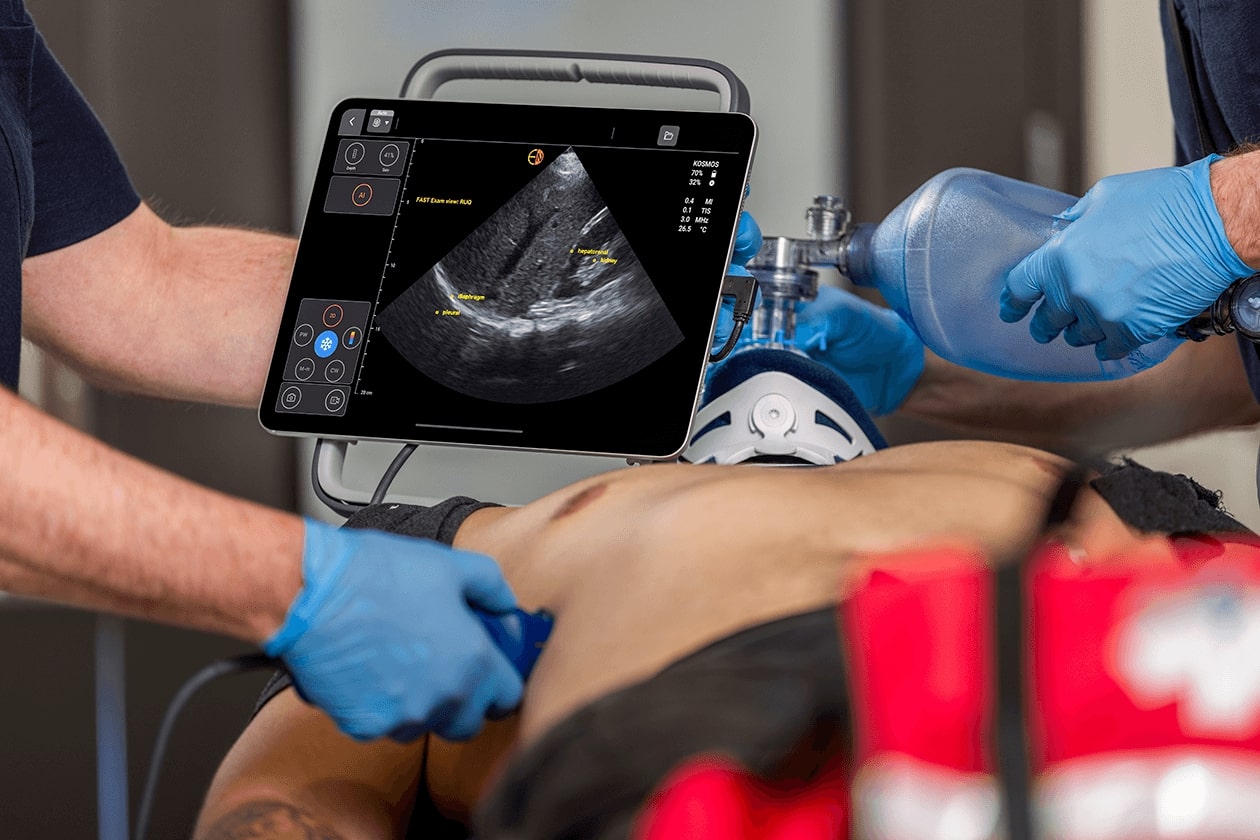Appendicitis Ultrasound: Can you find the appendix using POCUS?
Introduction
When diagnosing appendicitis, every minute counts in the emergency department (ED). Traditionally, we’ve relied on computed tomography (CT) to provide accurate diagnoses, but the downside is CT is slow and exposes patients to radiation.
Enter point-of-care ultrasound (POCUS) – a quick, noninvasive, and radiation-free alternative gaining traction. However, there’s actually a lot of debate surrounding whether appendicitis can be found on ultrasound. While POCUS offers many benefits, like speed and accessibility, its ability to visualize the appendix is still being questioned, and much of its success depends on the provider’s experience using it.
Key Takeaways:
With advanced ultrasound tools like Kosmos, appendicitis can be identified with ultrasound first and confirmed with a CT scan after if needed. This approach can help ED directors optimize workflow and resource use, balancing speed, safety, and accuracy.
The appendix is notoriously difficult to visualize on ultrasound due to obstructing bowel and bowel gas.
If the patient has appendicitis, it can be visualized on ultrasound, saving enormous amounts of time and money and expediting care. This goes a long way in alleviating overcrowded ERs.
Table of contents
The Challenge: Finding An Elusive Appendix with Ultrasound
Appendix Visibility
Here’s the kicker – one of the biggest problems with abdominal ultrasound is how tricky it can be actually to find the appendix. Even experienced physicians report that POCUS only detects the appendix in about 30% of the cases [1].
Why?
It comes down to a few factors.
Obesity, bowel gas, and the appendix’s small size make it easy to hide, especially when it’s tucked away behind the intestines. So, despite POCUS being a fantastic tool, it doesn’t always give us a clear shot [2].
A Skills Issue?
There’s significant interest in improving the ability to visualize the appendix with ultrasound, as shown by the growing number of online searches [3].
Both healthcare professionals and patients are optimistic that finding appendicitis on ultrasound can become more reliable with the proper techniques. Despite its popularity, visualizing the appendix remains challenging for novice and experienced physicians.
The debate continues: Is POCUS falling short because of the tool, or is it a skills issue?
Discover how EchoNous can help your team enhance their POCUS skills and streamline diagnoses in your emergency department. Learn more about Kosmos point-of-care ultrasound solutions.
Why POCUS? The Speed and Efficiency Benefits
Fast, Efficient Diagnosis
One of the critical advantages of POCUS is its ability to provide rapid diagnosis. In the emergency department (ED), where time is crucial, using ultrasound to detect conditions like appendicitis allows physicians to diagnose within minutes.
For instance, a patient with right lower quadrant pain can be assessed for appendicitis in about five minutes with POCUS. In contrast, waiting for a sonographer and a radiologist could take up to six hours, not including the time the patient waited before being evaluated.
During that delay, the patient suffers ongoing discomfort, and the risk of complications, such as perforation, increases.
A Real-World Efficiency
Consider a patient with suspected appendicitis. The physician performs a quick abdominal ultrasound and immediately identifies inflammation, allowing treatment to begin immediately. Within an hour, the patient is either admitted for surgery or sent home with a treatment plan.
This contrasts with the traditional method, where waiting for CT imaging could delay care by 6+ hours, potentially extending the patient’s ED stay to a full day. Quicker diagnosis leads to faster care and better outcomes.
Reducing Radiation Exposure
Another massive win for POCUS is the fact that it doesn’t expose patients to radiation. CT scans are incredibly effective, but they come with risks, especially for younger patients or those who might be pregnant. Reducing radiation is a priority in healthcare, and POCUS gives physicians a safe alternative that doesn’t sacrifice diagnostic power.
For emergency department directors, this is a critical cost saver. Implementing POCUS helps protect patients while giving clinicians the necessary diagnostic tools to make quick decisions.
POCUS Alleviates ED Overcrowding
Kosmos as a Time-Saving Tool
We’ve all seen it – EDs with patients lined up, waiting for imaging. It’s no secret that extensive wait times for CT scans can bottleneck the entire flow of an emergency department.
However, with ultrasound, emergency departments can reduce wait times significantly. POCUS allows emergency physicians to assess patients quickly, often eliminating the need for advanced imaging and drastically reducing the time patients spend waiting for results.
This reduction in wait times means more patients can be diagnosed, treated, and either admitted or discharged faster, improving the overall efficiency of the ED. Plus, it frees up critical imaging equipment for more severe cases that truly need it.
Cost Savings That Add Up
Let’s talk dollars and cents for a minute. Advanced imaging techniques like CT scans are increasingly cost-prohibitive. They require specialized staff, equipment, and time. All these add up.
Finding appendicitis with ultrasound, on the other hand, is cost-effective. It requires less equipment, fewer people, and no radiation, which means you’re cutting costs across the board.
By using POCUS to diagnose conditions like appendicitis, EDs can significantly reduce the need for costly imaging services. This is a huge advantage for hospitals looking to optimize budgets without sacrificing patient care.
Ready to cut down wait times and lower advanced imaging costs? Explore Kosmos POCUS devices.
Training Makes the Difference: Mastering POCUS for Appendicitis
Overcoming Operator Dependency
One of the biggest challenges with finding appendicitis on ultrasound is that it’s highly operator-dependent. Unlike CT scans, which are performed and interpreted by radiologists, POCUS is typically done by the provider at the bedside. If the provider hasn’t had enough training, they may miss key signs, run into artifacts like reverberation or acoustic shadowing, or struggle to visualize the appendix altogether.
To get the most out of POCUS, it’s crucial that providers receive regular training and competency assessments. For ED directors, this means investing in education for the staff to ensure that they’re proficient in using POCUS for appendicitis and other applications.
Is visualizing the appendix and diagnosing appendicitis too elusive for POCUS, or is this just a skills issue? We’ve heard from physicians on both sides of the debate. Chime in with your thoughts!
A Hybrid Approach: POCUS and CT Working Together
While POCUS is fast and effective, it’s not perfect. Sometimes, it doesn’t give us a definitive answer, and in those cases, CT scans are still needed. Many emergency departments are adopting a hybrid approach, where POCUS is used first to get a quick read, and if the diagnosis is still unclear, a CT scan is ordered as a follow-up.
This method gives you the best of both worlds – faster initial diagnoses with POCUS and the added accuracy of CT for confirmatory diagnosis when needed. For ED directors, this approach can help optimize workflow and resource use, balancing speed, safety, and accuracy.
Conclusion
Finding appendicitis with POCUS offers several key benefits for diagnosing acute abdominal conditions in the emergency department.
While POCUS may not always provide a definitive diagnosis, its ability to deliver fast, radiation-free, noninvasive, low-cost imaging makes it an incredibly valuable tool in the emergency department.
The challenge for emergency department directors is ensuring that staff are adequately trained to use POCUS effectively and integrating it into a broader diagnostic strategy.
POCUS isn’t replacing CT scans anytime soon, but it’s certainly making a case for itself as a powerful complement to traditional imaging [3].
As the technology and training around POCUS continue to improve, its role in diagnosing conditions like appendicitis will only grow.
References
- Radonjić, T., et al. (2022). Point-of-Care Abdominal Ultrasonography (POCUS) on the Way to the Right and Rapid Diagnosis. Diagnostics (Basel, Switzerland), 12(9), 2052.
- Cho, S. U., & Oh, S. K. (2023). Accuracy of ultrasound for the diagnosis of acute appendicitis in the emergency department: A systematic review. Medicine, 102(13), e33397. Partain, K. N., et al. (2017). Improving ultrasound for appendicitis through standardized reporting of secondary signs. Journal of pediatric surgery, 52(8), 1273–1279.
- van Randen, A., et al. (2011). A comparison of the accuracy of ultrasound and computed tomography in common diagnoses causing acute abdominal pain. European radiology, 21, 1535-1545.




